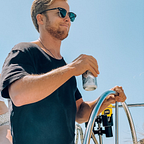Bringing Your Fitness Club into the Rapidly-Evolving Tech Industry of 2020: Part Two
Last year, I wrote Part 1 of evolving your fitness club. Globally, business is forever changed by 2020. The intent of this series is to guide the evolution of an industry with enormous potential for great good — health & fitness—by providing insights learned from consulting the Fortune 50 giants of our industry down to the unique single-operators.
The health and fitness industry is no stranger to the devastating effects of the COVID-19 pandemic. Profit margins are negative. Fitness clubs in “semi-open” states are down to 50–60% revenue. Club revenue in locked down states has plummeted to 30-40%.
Luckily, the fitness industry has always been one of positive changes. Before Nike made personal fitness not only cool but accessible in the 1970s, exercises like jogging were something “only athletes and boxers really did” as Vox describes. Group fitness (jazzercise, water-aerobics) soon followed in the ’80s, bringing exercise to the suburbs. Gym culture really picked up speed as real estate companies opened wide-scale gym chains like Lifetime Fitness in 1990 and Equinox Fitness in 1991. The extent of fitness software at the time was merely bill and payment processors.
Through the rise of boutique clubs with curated fitness experiences and personal training programs, changes in the last decade have been swift, focused, and undeniably impactful. The industry has moved away from stuffing as many people in a room as possible for a monthly fee to changing people’s lives through app-based workouts and community-driven fitness cultures. Less focused on weight loss, more on overall wellbeing.
Now in 2020, in the face of unprecedented change, health has never looked more different. Fitness clubs are left wondering how they can reach and support their members when the industry is so turbulent. From companies just dipping their toes into the digital world to players looking to shift their offerings, here are my experiences:
How can fitness clubs with little digital experience build products right now?
The first thing to consider is building versus buying your digital offering. Building an amazing product from scratch could be a game-changer for your business with the right tech partner involved, but can take months to see fruition. Buying a product to fit your current needs will grant you more time to outline your strategy for future builds.
Expanding your club experiences? Baseline is an emerging Social Fitness App for clubs, boutiques, and studios looking to directly connect their trainers and instructors with clients and members. The app provides tools for custom workouts, team chats, and daily challenges to encourage accountability and community building.
Focusing on your membership needs? Look into upgrading your membership management software to Perfect Gym, Club Automation, Exerp, or more.
Searching for new member offerings? Check out Wexer for digital class content or Welld Health, a company that “connects physicians, workplaces, fitness clubs, and individuals for one purpose; help improve their health by coming together in an integrated wellness ecosystem.” Their HIPPA-compliant resources allow your members to access programs based on their fitness levels and medical history, as well as individualized recommendations from physicians to keep them on-target with their fitness goals.
Perhaps the most important thing to note as you’re looking into expanding digital tools: this is not the time to be up-charging your customers. Wallets are tight and so is patience for new products. This is the time to simply provide your digital product as an extension of what you’re already offering.
How can a club plan for a product’s positioning to still make sense when the industry feels “normal” again?
Recognize that your biggest competitor is the consumer. Every fitness company is jumping to reach consumers at home. This has resulted in a flood of fitness companies offering digital content libraries of exercise classes for an additional monthly fee. Fee-based libraries have to compete with free, accessible workouts offered on Youtube, Instagram, and TikTok. Guess which avenue is winning?
Go in the opposite direction. Revisit your truths. What do your members truly embrace most about you? Whether it’s group fitness classes, personal training, or an in-house community, think about how you can bring those offerings to consumers digitally or socially distanced. Define your brand experience in a new environment, rather than trying to build something your members don’t associate your brand with.
Don’t be afraid to bring in a second opinion. Whether it’s direct member feedback or a product consultancy, getting another voice in the room will help you polish your strongest points and tread unfamiliar territory.
What are the most basic aspects that a new health/fitness product should have?
- A seamless barrier to entry. Product adoption begins with a simple trial and signup process. If it’s not seamless, it’s not going to get adopted.
- Community. If your product doesn’t encourage people to come together (physically or digitally), you’re not going to see the holistic benefits of adding digital to your wheelhouse.
- Connection. Add personalization as much as possible. A digital product is a perfect place for members to hear from general managers on a personal level.
- You. Show off what makes your club great. Tap into what your members love and make the product an extension of your brand.
In times of industry uncertainty, one thing you can count on is that those who pivot their offerings to incorporate digital products organically will have a better chance at success. It’s time to meet members where they are. Dig into what has made your brand successful and use digital platforms as an extension of what you already do best.
Let’s lead health & fitness, globally.
